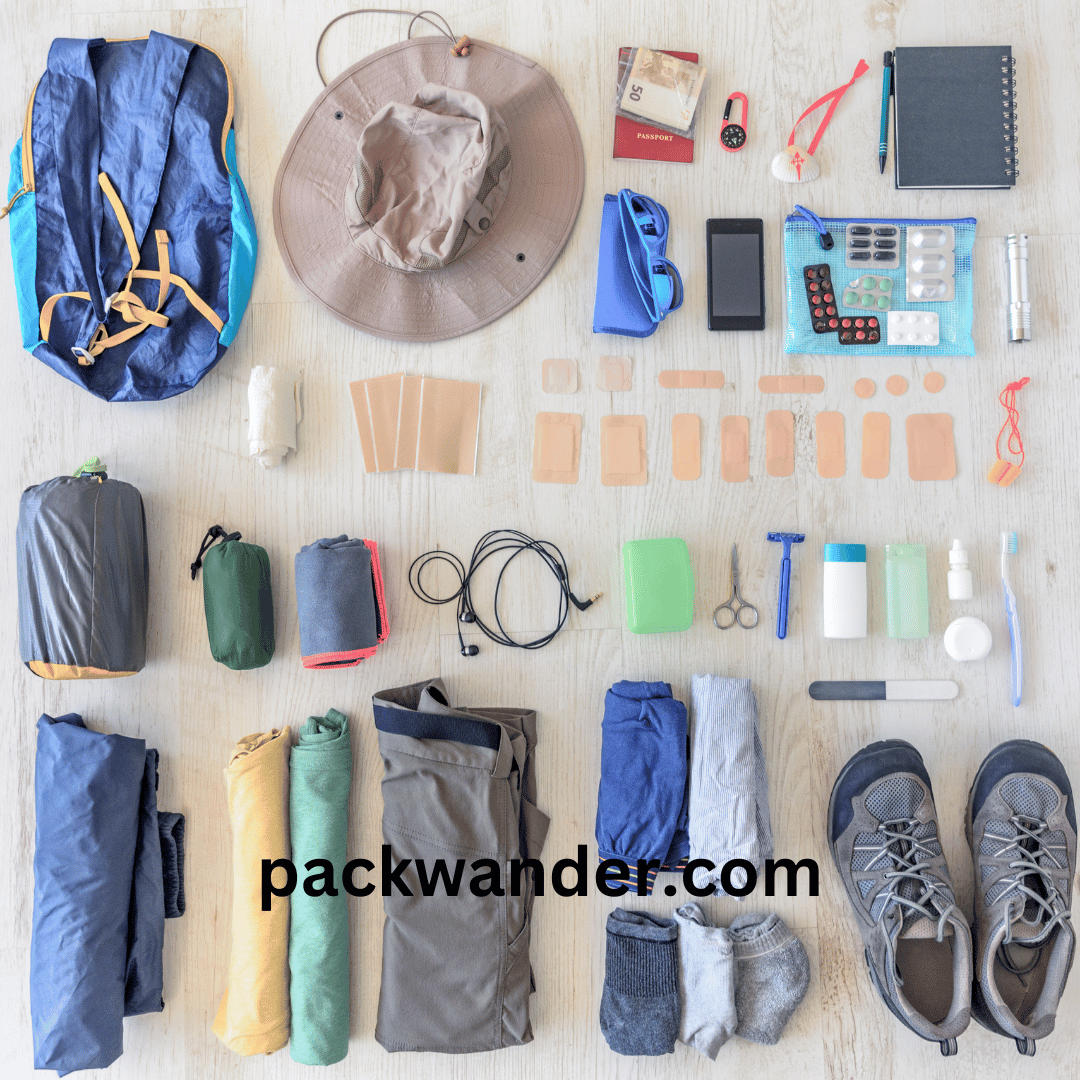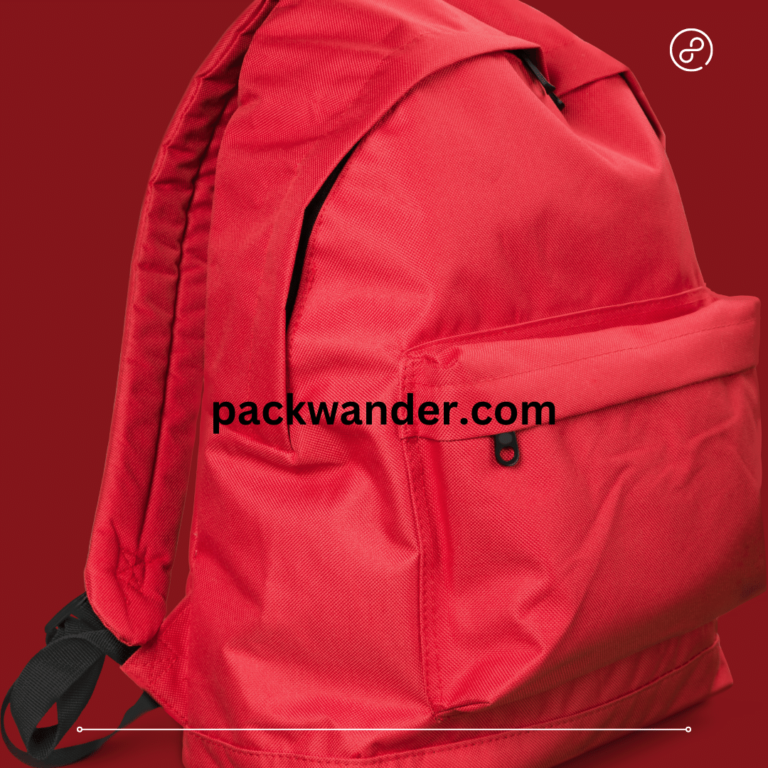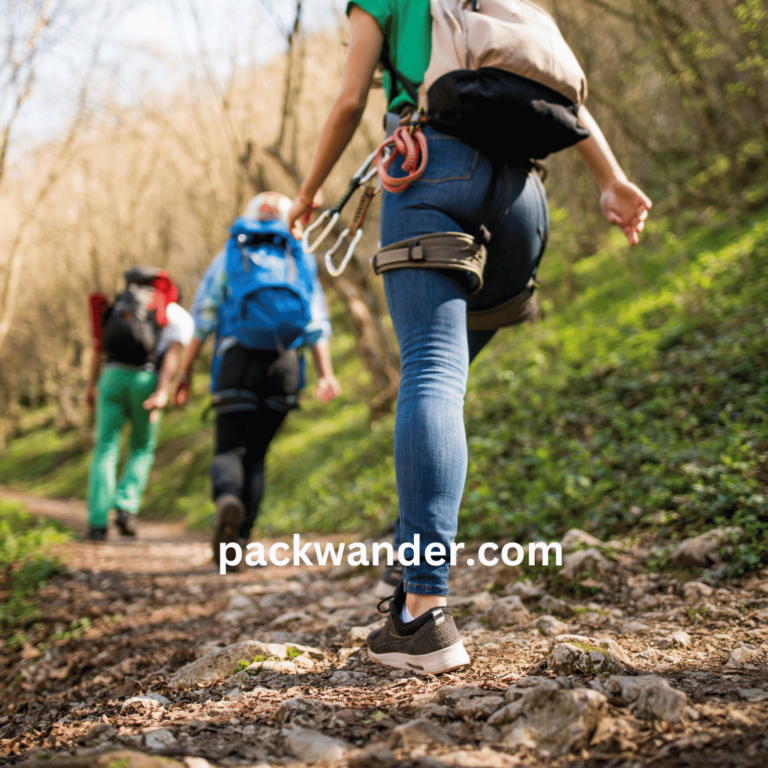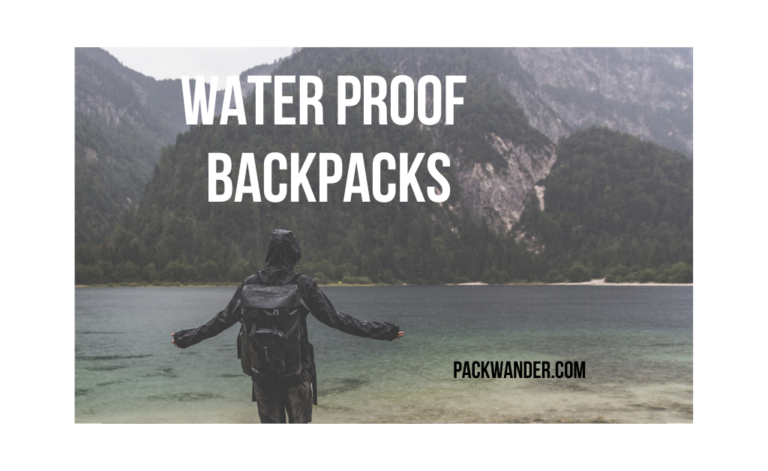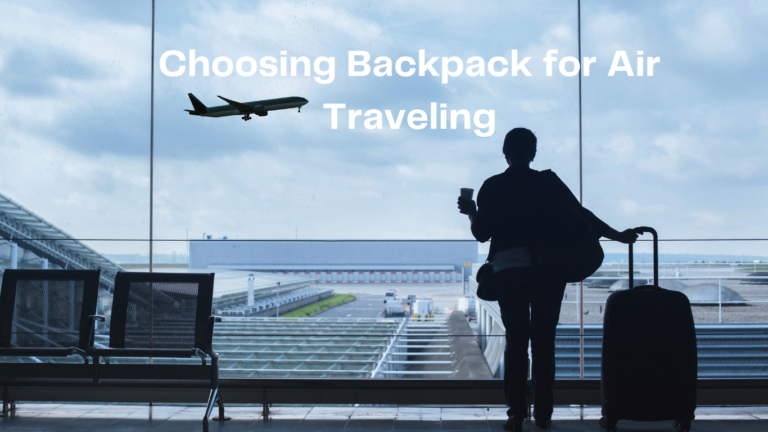How to Pack a Backpack for Camping: The Ultimate Guide to Organizing Your Outdoor Adventure
Introduction
Welcome to the great outdoors! If you’ve decided to embark on a camping adventure, you’re in for an unforgettable experience with nature’s wonders. But before you hit the trails and immerse yourself in the wilderness, there’s a crucial task at hand: “How to Pack a Backpack for Camping” efficiently.
Packing your backpack the right way can make all the difference in ensuring a comfortable and enjoyable camping trip. A well-organized backpack not only lightens your load but also keeps essential items at your fingertips when you need them most. So, let’s delve into the art of packing your backpack in easy, simple, and human-friendly English to make your camping journey a breeze.
Table of Contents
Choose the Right Backpack
When it comes to camping, selecting the right backpack is crucial for a comfortable and enjoyable outdoor adventure. Your backpack is like your trusty companion, carrying all the essentials you need to survive and thrive in the wilderness. Here’s a simple guide to help you pick the perfect backpack size and features based on your camping trip’s duration and gear.
1. Consider Backpack Size: The first step is to choose a backpack with the right capacity for your needs. Backpacks typically come in liters, indicating how much gear they can hold. For overnight trips, a backpack with a capacity of 30-50 liters should suffice. If you plan for longer trips, opt for a backpack with 50-70 liters of capacity. However, if you’re embarking on multi-day or thru-hiking adventures, consider a larger backpack with 70 liters or more.
2. Assess Gear and Weight: Take an inventory of your camping gear and estimate its total weight. It’s essential to know how much weight your backpack will carry, as this affects your comfort during the journey. As a rule of thumb, your loaded backpack should not exceed 20-30% of your body weight to prevent strain and discomfort.
3. Check for Support and Comfort: Look for a backpack with padded shoulder straps and a ventilated back panel to provide comfort and prevent chafing. Using a padded hip belt is essential for shifting weight to your hips and alleviating pressure on your shoulders. An adjustable backpack with straps for load stabilization will help you achieve a balanced and stable fit.
4. Focus on Durability and Weather-Resistance: Since you’ll be outdoors, your backpack should be durable and weather-resistant. Opt for backpacks made of high-quality materials like nylon or polyester, which can withstand rough terrain and unexpected weather conditions. Additionally, look for backpacks with a built-in rain cover or consider purchasing one separately to protect your gear from rain.
5. Accessibility and Organization: Consider a backpack with multiple compartments and pockets for easy organization of your gear. Top-loading backpacks are popular for their simplicity, while front-loading ones allow you to access items without unpacking everything. Side pockets are handy for carrying water bottles or snacks, while hip belt pockets offer quick access to essentials like your phone or a multi-tool.
6. Try It On: Before making your final decision, try on the backpack and adjust the straps to achieve a comfortable fit. Walk around the store or your home with some weight inside the backpack to test how it feels on your back.
Remember, a well-fitted and appropriately sized backpack can make all the difference during your camping trip. Take your time to find the perfect match, and you’ll be all set to embark on your outdoor journey with confidence and ease!
Camping Checklist: Don’t Forget Any Essentials!
When preparing for your camping adventure, having a comprehensive checklist is crucial to ensure you pack all the necessary items. No one wants to reach the campsite only to discover they left something important behind! Follow this easy-to-use camping checklist to make sure you’ve got everything you need for a fantastic outdoor experience.
Shelter and Sleeping Gear:
- Tent or hammock with rainfly (if required)
- Tent stakes and guylines
- Sleeping bag suitable for the season
- Sleeping pad or air mattress
- Repair kit for tent and sleeping gear
Clothing:
- Moisture-wicking and quick-drying shirts and pants
- Insulating layers (e.g., fleece or down jacket)
- Waterproof and windproof jacket
- Extra pairs of socks and underwear
- Sturdy hiking boots or shoes
- Sun hat or beanie, depending on the weather
- Gloves (for cold weather camping)
- Bandana or buff
- Pajamas for a comfortable night’s sleep
Cooking and Food:
- Portable camping stove
- Fuel for the stove
- Cooking utensils (pot, pan, spatula, etc.)
- Eating utensils (fork, knife, spoon)
- Biodegradable soap and sponge for cleaning
- Food storage containers or resealable bags
- Cooler (if needed) with ice packs
- Freeze-dried or dehydrated camping meals
- Snacks (nuts, granola bars, trail mix, etc.)
- Plenty of drinking water or water filtration system
- Water bottles or hydration reservoir
- Portable coffee maker (for coffee enthusiasts)
Navigation and Safety Tools:
- Map of the area and compass
- GPS device or smartphone with GPS apps
- Headlamp or flashlight with extra batteries
- First aid kit with essential supplies
- Multi-tool or camping knife
- Whistle and signal mirror for emergencies
- Fire-starting equipment (lighter, matches, or fire starter)
- Sunscreen and insect repellent
Personal Items:
- Personal identification and camping permits
- Cash and credit/debit cards
- Mobile phone and portable charger
- Camera or binoculars (optional)
- Personal hygiene items (toothbrush, toothpaste, etc.)
- Prescription medications and any necessary medical supplies
- Quick-dry towel
- Camping pillow or stuff sack with extra clothes
Other Essentials:
- Backpack rain cover or waterproof bags
- Trekking poles (if needed for hiking)
- Duct tape or repair tape for quick fixes
- Garbage bags for trash and waste disposal
Remember, “How to Pack a Backpack for Camping” A well-organized backpack will help you carry all these essentials comfortably. Make sure to distribute the weight evenly and keep frequently needed items easily accessible.
Categorize Your Gear
When preparing for a camping trip, organizing your gear into different categories can greatly simplify the packing process. By dividing your camping essentials into manageable groups, you can ensure a smooth and efficient packing experience. Here are the common categories to consider:
1. Shelter and Sleeping Gear:
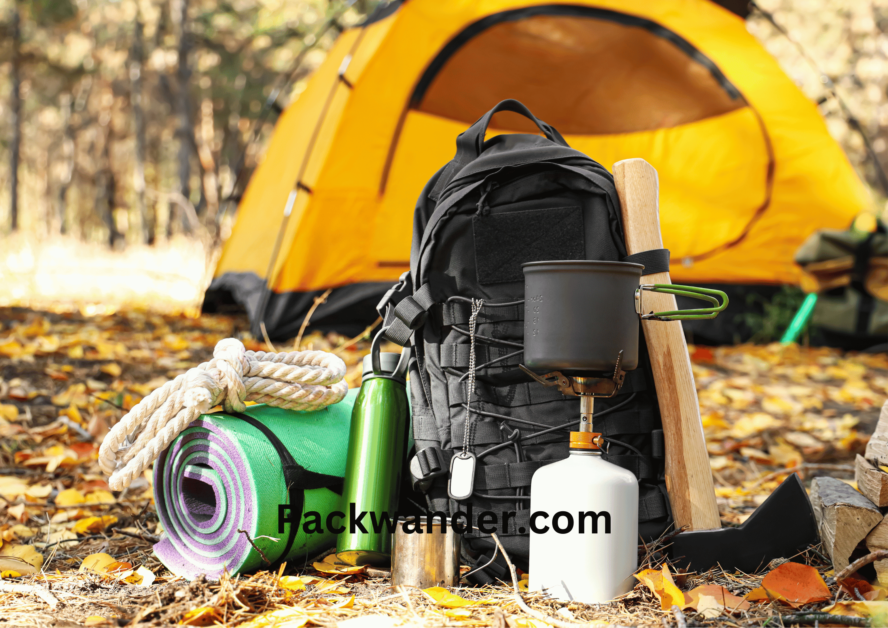
This category includes everything you need to stay comfortable and protected during the night. It typically comprises your tent, sleeping bag, and sleeping pad. Roll or fold your sleeping bag tightly to save space and pack it at the bottom of your backpack. Remember to use a waterproof stuff sack to keep it dry and ready for a good night’s sleep.
2. Clothing: Pack your clothing items based on priority and frequency of use. Roll or fold your clothes neatly to minimize wrinkles and save space. Consider the weather and duration of your trip to determine the appropriate clothing items. Always bring an extra set of socks and underwear, and don’t forget to pack a rain jacket or a warm layer, depending on the forecast.
3. Cooking and Food: When it comes to camping meals, packing efficiently is essential. Store your camp stove and cookware in a separate compartment or stuff sack. Choose lightweight and compact cookware to minimize the overall weight. Pack your food in sealed containers to avoid spills and attract wildlife. Remember to pack utensils, a multi-tool, and a portable water filter or purification tablets for safe drinking water.
4. Navigation Tools: Staying on track during your camping adventure is crucial. Include essential navigation tools such as a map, compass, or GPS device in an easily accessible pocket. Familiarize yourself with the map and plan your route before starting your journey. Additionally, keep a headlamp handy for navigating in the dark.
5. Personal Items: In this category, you’ll pack items for personal hygiene and safety. Use small, waterproof containers or bags to store items like toothbrushes, toothpaste, hand sanitizer, sunscreen, and insect repellent. Don’t forget to bring any necessary medications and a first aid kit for unexpected situations.
By categorizing your camping gear in this way, you can pack your backpack more efficiently, making sure all your essentials are easily accessible when needed. This well-organized approach allows you to focus on the excitement of your camping trip without worrying about rummaging through a chaotic backpack.
Packing Shelter and Sleeping Gear
- Tent:
- Start by spreading out the tent on a clean and dry surface.
- Fold the tent along its length, keeping it taut and even.
- Create a tight roll of the tent, starting from one end and going all the way to the opposite side.
- Place the rolled tent in a waterproof stuff sack to protect it from moisture.
- Sleeping Bag:
- Lay the sleeping bag flat and smooth out any wrinkles.
- Fold the sleeping bag in half lengthwise.
- Roll the sleeping bag tightly from the foot end to the head end.
- Insert the rolled sleeping bag into a waterproof stuff sack to keep it dry.
- Sleeping Pad:
- Deflate the sleeping pad and fold it in half lengthwise.
- Roll the sleeping pad tightly from one end to the other.
- Use straps or bands to secure the rolled sleeping pad.
- Place the sleeping pad alongside the tent and sleeping bag in a waterproof stuff sack.
Remember, the key to packing your shelter and sleeping gear efficiently is to keep them protected from moisture by using waterproof stuff sacks. This ensures that your gear stays dry and ready for a comfortable night’s rest during your camping adventure.
By following these simple steps, you’ll be able to pack your backpack for camping with ease and confidence, ready to enjoy the great outdoors.
Organizing Clothing
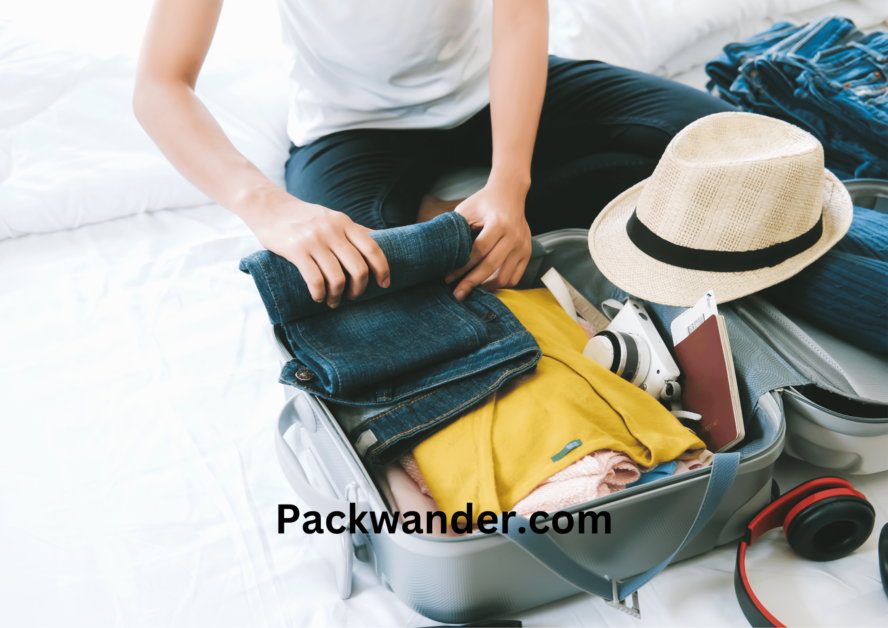
Organizing your clothing efficiently is crucial when packing a backpack for camping. Here are some easy and practical tips to help you save space, minimize wrinkles, and have quick access to the items you need:
- Rolling Clothes: Instead of folding, roll your clothes tightly. Rolling helps to reduce creases and takes up less space in your backpack. It’s especially useful for t-shirts, pants, and lightweight clothing.
- Folding for Delicates: For delicate clothing or items that are prone to wrinkles, fold them neatly. Place them on top of the rolled clothes to keep them as wrinkle-free as possible.
- Use Packing Cubes or Compression Bags: Consider using packing cubes or compression bags to keep your clothes organized and compressed. These nifty accessories can make it easier to group clothes by type or outfit.
- Organize by Priority: Place frequently used clothing at the top or in outer pockets of your backpack. This way, you can access them quickly without digging through your entire pack.
- Layering Technique: When organizing clothes inside your backpack, use the layering technique. Start with larger, heavier items at the bottom and work your way up to lighter ones. This method helps maintain stability and balance during your hike.
- Pack Versatile Clothing: Choose clothing items that can be mixed and matched for different outfits. This will save space and allow you to pack fewer items while still having a variety of outfit options.
- Weather Considerations: Be mindful of the weather at your camping destination. Pack appropriate clothing for both daytime and nighttime temperatures, as well as any potential rain or wind conditions.
- Limit Extra Clothing: Avoid packing excessive clothing items “just in case.” Stick to the essentials and remember that you can re-wear some items during a camping trip.
- Use Ziplock Bags for Small Items: Keep small accessories like socks, underwear, and accessories in separate ziplock bags. It makes them easy to find and prevents them from getting lost in your backpack.
Remember, the key to efficient clothing organization when packing a backpack for camping is to prioritize and be mindful of what you’ll need most during your trip. By following these simple tips, you can have a well-organized backpack that allows for a smooth and enjoyable camping experience.
Packing Cooking and Food Supplies
When it comes to How to Pack a Backpack for Camping, organizing your cooking and food supplies is crucial to ensure a hassle-free and enjoyable outdoor culinary experience. Here’s a simple guide to packing your camp stove, cookware, and food securely while keeping everything well-organized:
- Choose Lightweight and Compact Gear: Opt for lightweight and compact cooking equipment specially designed for backpacking trips. Look for collapsible pots and pans, foldable utensils, and nesting cookware sets. This not only saves space in your backpack but also reduces the overall weight, making your journey more comfortable.
- Use Waterproof Containers: To prevent spills and keep your food safe, place perishables like sauces and condiments in sealed, waterproof containers. Mason jars, resealable plastic bags, or specialized camping food containers are great options.
- Pack Your Camp Stove Carefully: Place your camp stove in a durable stuff sack or a designated compartment within your backpack. Ensure that any fuel canisters are tightly sealed to prevent leakage. Keep the stove away from your food items to avoid potential contamination.
- Nest Cookware and Utensils: Arrange your cookware and utensils so that they fit snugly inside each other, like a nesting doll. This method optimizes space and keeps everything organized. You can use a bandana or dishcloth to cushion and protect the nested items.
- Prioritize Essential Food Items: Pack non-perishable and lightweight food items as your primary sustenance. Consider items like instant oatmeal, dehydrated meals, energy bars, and trail mix. Plan your meals ahead of time to avoid overpacking unnecessary items.
- Pack in Resealable Bags: Instead of bringing bulky food packaging, transfer food into resealable bags. Label each bag with the contents and cooking instructions. This not only reduces space but also helps with portion control.
- Minimize Waste and Single-Use Items: Be conscious of your waste production by avoiding single-use items like disposable plates and cutlery. Opt for reusable items made of lightweight materials, such as silicone or titanium.
- Keep a Separate Trash Bag: Carry a designated trash bag and store all your waste securely. Remember to follow the principles of Leave No Trace and take all your trash with you when leaving the campsite.
By following these tips, you can efficiently pack your cooking and food supplies for your camping adventure. Enjoy delicious meals amidst nature while keeping your backpack tidy and well-organized.
Adding Navigation and Safety Tools
Importance of Easy Access to Navigation Tools and Safety Items
When you’re out camping, having quick access to navigation tools and safety items can make a significant difference in ensuring a safe and enjoyable trip. How to Pack a Backpack for Camping involves strategically placing these essentials within reach, so you’re always prepared for any situation.

Guidance on Organizing Navigation Tools
- Maps: Keep your maps in a waterproof and transparent pouch or pocket on the outside of your backpack. This way, you can easily refer to them without having to open your bag.
- Compass: Attach your compass to a zipper pull or secure it to a loop inside the top lid of your backpack. This simple trick ensures you can quickly glance at the compass for direction while on the move.
- GPS Devices: If you rely on a GPS device, consider securing it to a shoulder strap or chest harness. Having it at eye level allows for effortless navigation without interrupting your stride.
First Aid Kit Placement
The first aid kit is a crucial item that should always be easily accessible during your camping trip. For immediate access, store it in the top lid compartment or a designated external pocket. If your backpack has hip belt pockets, these can also serve as convenient locations for essential medical supplies.
Securely Fasten Your Gear
To avoid losing or misplacing any of your navigation tools or safety items, ensure they are securely fastened. Zippered or buckle pockets work well for this purpose, and you can even use carabiners to attach smaller tools to gear loops on the outside of your backpack.
By having your navigation tools and safety items readily available, you’ll be better equipped to handle unexpected situations and stay on track during your camping adventure. A well-organized backpack means more time enjoying the great outdoors and less time rummaging through your gear!
Organizing Your Personal Items
When packing your backpack for camping, it’s crucial to keep your personal items tidy and accessible. Here are some easy and simple tips to help you with this task:
- Use Small, Waterproof Containers or Bags: Opt for compact, waterproof containers or resealable bags to store your personal hygiene items and medications. These containers will keep your items dry and protected from potential leaks or spills.
- Pack Essential Personal Items: Prioritize comfort and hygiene by including essential personal items. Some examples include toothbrush and toothpaste, biodegradable soap, hand sanitizer, wet wipes, and a small towel. Remember, it’s about the essentials to keep you feeling fresh and clean during your camping adventure.
- Separate and Organize: Keep your personal items separate from your food and cooking gear to avoid cross-contamination. Use different containers or bags for each category, and label them if necessary for quick identification.
- First Aid Kit: Ensure your first aid kit is easily accessible. Store it in a designated pocket or compartment so that you can quickly grab it in case of emergencies.
- Minimalist Approach: Embrace a minimalist approach when it comes to personal items. Only bring what you truly need for the duration of your camping trip. Unnecessary items will only add extra weight to your backpack.
Remember, the focus is on enjoying the outdoors and simplifying your camping experience. By organizing your personal items thoughtfully, you can stay comfortable and maintain good hygiene throughout your journey.
Distributing Weight Properly
When you’re out camping, knowing how to pack a backpack is crucial for a comfortable and enjoyable experience. One essential aspect is distributing weight properly. The idea is simple: distribute the load evenly to maintain balance and reduce strain on your back and shoulders.
Tips for Proper Weight Distribution:
- Place Heavy Items Close to Your Back: When loading your backpack, put the heavier items near your back and towards the center of the pack. This helps to keep the weight close to your body’s natural center of gravity, making it easier to carry and maintain stability.
- Use the Bottom and Middle Sections: Stash the heavier gear, like your tent and cooking equipment, at the bottom and middle sections of the backpack. This low and central placement prevents the bag from feeling top-heavy and keeps you steady on uneven terrains.
- Balance Left and Right: Ensure that the weight is evenly distributed between the left and right sides of your backpack. An imbalanced load can cause discomfort and may throw you off balance while hiking.
- Avoid Overloading: While it might be tempting to bring along everything you think you’ll need, remember to pack only the essentials. Overloading your backpack can strain your back and make hiking more challenging.
- Use Compression Straps: Many backpacks come with compression straps on the sides. Utilize them to cinch down your pack and prevent the contents from shifting during your hike.
- Keep Frequently Used Items Accessible: Items you’ll need often, like a water bottle or snacks, should be placed in external pockets or at the top of the main compartment for easy access.
By following these simple tips for proper weight distribution, you’ll find that your backpack feels more comfortable, and you can enjoy your camping trip without unnecessary strain on your back.
Utilizing External Attachment Points
When packing your backpack for camping, don’t overlook the advantages of using external loops and straps to attach essential items. These external attachment points can significantly enhance your camping experience, making it easier to access frequently needed gear while keeping your backpack organized. Here, we’ll explore the benefits of using these external features and provide simple examples of what can be attached externally and how to secure them.
Advantages of External Loops and Straps:
- Easy Access: By attaching commonly used items externally, you can quickly access them without the need to rummage through your entire backpack. This is especially handy for trekking poles, which you might need at a moment’s notice during hiking.
- Optimal Weight Distribution: Some camping gear, like sleeping pads or rolled-up tents, can be bulky and take up valuable space inside your backpack. Attaching them externally not only frees up space but also helps distribute weight evenly, improving your overall balance and comfort during your hike.
- Quicker Setup and Breakdown: Items like wet rain jackets or muddy hiking boots can be secured externally, preventing them from soiling the contents of your backpack. Plus, when it’s time to set up camp or break it down, you can easily access your tent or tarp from the outside, saving time and effort.
Examples of Items to Attach Externally:
- Trekking Poles: Many backpacks come with dedicated loops or straps designed to hold trekking poles securely. Simply slide the poles through the loops and fasten the straps to keep them in place.
- Water Bottles: Keep hydration within reach by using water bottle pockets or external mesh sleeves on the sides of your backpack. Slip the water bottle into the designated pocket for quick access during hikes.
- Sleeping Pads: Some backpacks have straps or bungee cords at the bottom or sides, ideal for securing your sleeping pad. Roll up the pad and use the straps to hold it firmly against the backpack.
- Rain Gear: After a rainy hike, you might want to avoid soaking the interior of your backpack. Use external attachment points to hang wet rain jackets or pants and let them dry while you walk.
Securing Items Externally:
- Loop and Fasten: For trekking poles, slide the poles through the loops and adjust the straps to secure them. Ensure they are tightly fastened to prevent slipping.
- Mesh Pockets: Insert your water bottles into the mesh pockets on the sides of your backpack. Make sure they fit snugly to prevent bottles from falling out during movement.
- Straps or Bungee Cords: Roll up your sleeping pad and secure it using the straps or bungee cords provided. Ensure a tight fit so the pad stays in place.
Remember, while external attachment points offer great convenience, be mindful not to attach items that could get caught on branches or hinder your movement. Strive for a balanced and organized load, using these attachment points judiciously to enhance your camping journey.
Ensuring Comfort and Accessibility
Adjusting Your Backpack for a Comfy Fit:
When preparing for your camping trip, achieving a comfortable fit for your backpack is crucial. Follow these simple steps to fine-tune your pack and enjoy a cozy journey:
1. Shoulder Straps:
- Loosen the shoulder straps before putting on your backpack.
- Place your arms through the straps and adjust them until they rest comfortably on your shoulders.
- Avoid tightening them too much, as it may cause discomfort and restrict your movement.
2. Hip Belt:
- Fasten the hip belt around your waist and center it over your hips.
- Tighten the belt snugly to transfer the weight of the backpack to your hips.
- The belt should fit comfortably without digging into your skin.
3. Sternum Strap:
- Connect the sternum strap across your chest, between the shoulder straps.
- Adjust the height of the strap to sit just below your collarbone.
- The sternum strap helps distribute weight evenly and stabilize the backpack.
Accessing Frequently Used Items with Ease:
A well-packed backpack saves time and frustration during your camping adventure. Keep these tips in mind to ensure easy access to your frequently used items:
1. Organize Your Essentials:
- Place items you’ll need throughout the day in accessible outer pockets or the top compartment of your backpack.
- Keep your snacks, water bottle, map, sunscreen, and rain jacket within arm’s reach.
2. Use Zippered Compartments:
- Opt for a backpack with multiple compartments and zipper pockets.
- Use these compartments to store small items like a headlamp, multi-tool, or camera safely.
3. Pack a Daypack:
- Consider bringing a smaller daypack or foldable backpack for short excursions from your campsite.
- This way, you can leave the bulkier backpack at the camp and carry just the essentials with you.
4. Utilize Gear Loops:
- Many backpacks come with gear loops on the outside. Attach items like trekking poles or a water bottle to these loops for easy access.
Remember, a comfortable backpack that grants easy access to your essentials enhances your overall camping experience. With the right adjustments and organization, your camping trip will be enjoyable and hassle-free, allowing you to fully immerse yourself in the beauty of nature.
Keeping It Light and Responsible
When packing your backpack for camping, it’s crucial to keep things light and carry only what you truly need. The focus keyword “How to Pack a Backpack for Camping” will guide us as we delve into the significance of maintaining a manageable backpack weight and being a responsible camper.
1. Travel Light, Travel Far: Traveling light not only reduces physical strain but also allows you to move more freely and cover longer distances. Consider the duration of your camping trip and pack only essential items that align with your planned activities.
2. Pack Smart, Pack Light: Prioritize multi-functional gear that serves multiple purposes. For instance, a multi-tool can be handy for cooking, repairing, and various other tasks, reducing the need to carry separate tools.
3. Embrace Minimalism: Choose lightweight, compact versions of camping gear without compromising safety or comfort. Opt for lightweight tents, sleeping bags, and cookware designed for backpacking.
4. The Leave No Trace Principle: Follow the Leave No Trace principles to minimize your impact on the environment. Avoid leaving trash behind, disturbing wildlife, or damaging natural resources.
5. Dispose of Trash Responsibly: Always pack out your trash and dispose of it properly once you return to a designated waste facility. Keep a small trash bag with you and make sure it’s securely sealed to prevent any litter.
6. Mindful Meal Planning: Plan your meals ahead to avoid carrying excess food that might go to waste. Choose lightweight, dehydrated, or freeze-dried meals to reduce weight and food packaging.
7. Durable and Reusable: Invest in durable, high-quality gear that lasts longer and reduces the need for frequent replacements. Additionally, opt for reusable containers for food and water, reducing disposable waste.
8. Share and Distribute Gear: If you’re camping with friends or a group, consider sharing communal gear like cooking equipment and tents. Distribute the load evenly among the group to make everyone’s backpack more manageable.
9. Regular Gear Checks: Periodically review your camping gear and evaluate whether any items can be replaced with lighter alternatives or left behind on future trips.
10. The Joy of Lightness: Embrace the feeling of lightness as you embark on your camping adventure. A lighter backpack will allow you to enjoy nature more and focus on the experience rather than being burdened by unnecessary weight.
By adopting these simple yet effective strategies, you can achieve a manageable backpack weight and become a responsible camper, leaving behind only footprints and taking away cherished memories of your camping journey.
Frequently Asked Questions (FAQs) – How to Pack a Backpack for Camping
1. What size backpack do I need for camping?
- The size of your backpack depends on the duration of your camping trip and the amount of gear you’ll carry. For weekend trips, a 40-60 liter backpack should be sufficient. For extended journeys, it’s worth considering a backpack with a capacity of 60-80 liters. Always choose a comfortable backpack that fits your body well.
2. Should I fold or roll my clothes when packing my backpack?
- Rolling clothes is generally more space-efficient and helps prevent wrinkles. It also allows for better organization and easy access to specific items. Consider rolling lightweight and moisture-resistant clothing for optimal packing.
3. How do I keep my sleeping bag dry in my backpack?
- Use a waterproof stuff sack or a compression sack to pack your sleeping bag. Additionally, line the inside of your backpack with a plastic garbage bag to provide an extra layer of protection against moisture.
4. Are there any space-saving hacks for packing my backpack?
- Yes! Use compression sacks for clothes and a compact sleeping bag. Minimize the number of unnecessary items and opt for multi-functional gear. Stuff smaller items, like socks, inside your shoes to save space.
5. How do I pack fragile items, like a camping stove, without breaking them?
- Wrap fragile items in soft clothing or place them in padded cases. If possible, keep them close to the center of the backpack, surrounded by softer items to minimize impact during movement.
6. Can I bring canned food while camping?
- Canned food can be heavy and takes up space. Consider dehydrated or freeze-dried meals, which are lighter and easier to pack. If you must bring canned food, choose lightweight options and pack them carefully to avoid dents and spills.
7. Is it better to attach items to the outside of my backpack?
- While attaching some items externally can be convenient, avoid hanging anything heavy or bulky on the outside. This can affect your balance and may get snagged on branches or rocks during hikes.
8. What’s the best way to organize my backpack for easy access to essential items?
- Keep frequently needed items, like a water bottle, snacks, map, and sunscreen, in easily accessible external pockets. Place essential gear such as a headlamp or first aid kit in the top compartment or lid pocket for quick access.
9. Can I bring my pet’s gear in my backpack if I’m camping with my dog?
- Yes, you can carry some of your pet’s gear, like food, collapsible bowls, and a leash, in your backpack. Consider using a separate stuff sack to keep their items organized and easily accessible.
10. How do I pack for an overnight hike without carrying too much weight?
- For overnight hikes, pack only the essentials and focus on lightweight gear. Leave unnecessary items behind and opt for high-quality, lightweight equipment to reduce the overall weight of your backpack.
11. How to Pack a Backpack for Camping: A Step-by-Step Guide
Packing a backpack for camping requires careful organization to ensure you have all the essentials while maintaining comfort during your outdoor adventure. Here’s a step-by-step guide to help you pack your camping backpack efficiently:
- Make a Camping Checklist: Before you start packing, create a comprehensive camping checklist. List all the necessary gear, including shelter, sleeping equipment, clothing, cooking supplies, food, navigation tools, and personal items.
- Divide Gear into Categories: Organize your camping gear into categories based on functionality. Common categories include shelter and sleeping gear, clothing, cooking and food, navigation tools, and personal items.
- Pack Your Shelter and Sleeping Gear: Begin by placing your tent or sleeping bag at the bottom of your backpack. Use a waterproof stuff sack to protect them from moisture.
- Organize Clothing: Roll or fold your clothes neatly and place them in a waterproof stuff sack. Organize them based on priority and frequency of use, with frequently needed items on top.
- Pack Cooking and Food Supplies: Store your camp stove, cookware, and food in a separate stuff sack. Make sure to pack food securely to avoid spills.
- Add Navigation and Safety Tools: Place your map, compass, GPS device, and first aid kit in easily accessible pockets. Keep them handy for quick reference.
- Organize Personal Items: Use small, waterproof containers or bags to pack personal hygiene items, medications, and other essentials. Keep them in an easy-to-reach pocket.
- Distribute Weight Properly: Place heavier items closer to your back and towards the center of the backpack. This ensures a balanced load and reduces strain on your back.
- Utilize External Attachment Points: Take advantage of external loops and straps to attach items like trekking poles or a water bottle. Securely fasten them to the outside of your backpack.
- Keep Essential Items Within Reach: Place items you may need during the hike, such as a water bottle or snacks, in accessible external pockets.
- Test the Backpack’s Comfort: Once the backpack is packed, adjust the shoulder straps, hip belt, and sternum strap for a comfortable fit. The weight should be evenly distributed on your hips.
12. How to Wear a Camping Backpack:
- Put on the Backpack: Stand upright and put on the backpack by sliding your arms through the shoulder straps.
- Adjust Shoulder Straps: Tighten or loosen the shoulder straps to ensure the backpack sits snugly on your back without sagging or pulling on your shoulders.
- Secure the Hip Belt: Fasten the hip belt around your hips and adjust it to bear the majority of the weight. The hip belt should sit above your hip bones for proper support.
- Fasten the Sternum Strap: Clip the sternum strap across your chest and adjust it to a comfortable position. This helps stabilize the shoulder straps and prevent them from slipping.
- Check for Balance: Make sure the weight of the backpack is evenly distributed, and the load is balanced from side to side. Make any necessary adjustments to achieve a comfortable and balanced fit.
Conclusion:
In conclusion, efficient packing of your backpack for camping is crucial to ensure a comfortable and enjoyable outdoor experience. Below is a brief summary of the main factors to consider:
- Choose the Right Backpack: Select a backpack that suits the length of your camping trip and distributes weight effectively.
- Make a Camping Checklist: Create a comprehensive checklist to avoid forgetting any essential items.
- Categorize Your Gear: Organize your camping gear into different categories, such as shelter, clothing, cooking, navigation, and personal items.
- Pack Shelter and Sleeping Gear: Use waterproof stuff sacks to protect your tent, sleeping bag, and sleeping pad.
- Organize Clothing: Roll or fold clothes efficiently and prioritize based on frequency of use.
- Pack Cooking and Food Supplies: Securely pack your camp stove, cookware, and food to prevent spills.
- Add Navigation and Safety Tools: Keep maps, compasses, GPS devices, and first aid kits easily accessible.
- Organize Personal Items: Use small, waterproof containers for personal hygiene items and medications.
- Distribute Weight Properly: Maintain balance by placing heavier items closer to your back and the center of the backpack.
- Utilize External Attachment Points: Attach items like trekking poles and water bottles to external loops and straps.
By following these tips, you can enhance your camping experience and make the most of your adventure in the great outdoors. Remember to pack only what you truly need to keep your backpack weight manageable and adhere to Leave No Trace principles by packing out your trash.
So, whether you’re embarking on a short weekend camping trip or a longer backpacking expedition, mastering the art of packing your backpack for camping will set you up for a more enjoyable and stress-free journey. Embrace the simplicity of nature and create lasting memories as you explore the beauty of the wilderness.
Bonus Tips and Recommendations
For Specific Types of Camping Trips or Environments:
- Backpacking Adventures: If you’re going on a multi-day backpacking trip, focus on lightweight and compact gear. Opt for dehydrated or freeze-dried meals to save space and weight in your backpack.
- Cold Weather Camping: Pack extra layers, a high-quality insulated sleeping bag, and a reliable tent that can withstand harsh weather conditions. Keep essential items like gloves and a beanie easily accessible.
- Beach Camping: Choose a tent with good ventilation and consider bringing a sand-proof groundsheet. Don’t forget to pack sunscreen, a hat, and a portable beach chair for relaxation.
- Family Camping: When camping with kids, prioritize comfort and entertainment. Bring games, books, and comfortable sleeping pads for everyone. Organize gear in separate bags for each family member to make unpacking easier.
- Wilderness Camping: In remote areas, carry a satellite communicator or emergency locator device for added safety. Pack extra food and a reliable water filter for extended stays.
Useful Camping Gear and Gadgets for Improved Packing Efficiency:
- Packable Backpack: Consider bringing a lightweight and foldable packable backpack for day hikes or short excursions from the main campsite.
- Compression Sacks: Invest in compression sacks to condense your clothes and sleeping bag, maximizing space in your backpack.
- Collapsible Water Bottle: Save space by using a collapsible water bottle that can be folded when empty.
- Multi-Tool or Swiss Army Knife: A versatile tool that includes a knife, scissors, and other useful functions can be a valuable addition to your camping gear.
- Dry Bags: Keep your electronics, important documents, and clothes dry by using waterproof dry bags.
- Portable Camp Stove: Opt for a compact and lightweight camp stove that is easy to set up and fuel-efficient.
- Headlamp or Lantern: Invest in a reliable headlamp or lantern to navigate your campsite at night without having to hold a flashlight.
- Trekking Poles: Reduce strain on your knees and add stability to your hikes with a pair of adjustable trekking poles.
By incorporating these bonus tips and recommendations into your camping preparations, you can tailor your packing approach to suit different camping scenarios and enhance your overall camping experience. Remember, the key to a successful camping trip is a well-organized backpack that allows you to focus on nature, adventure, and creating unforgettable memories.

